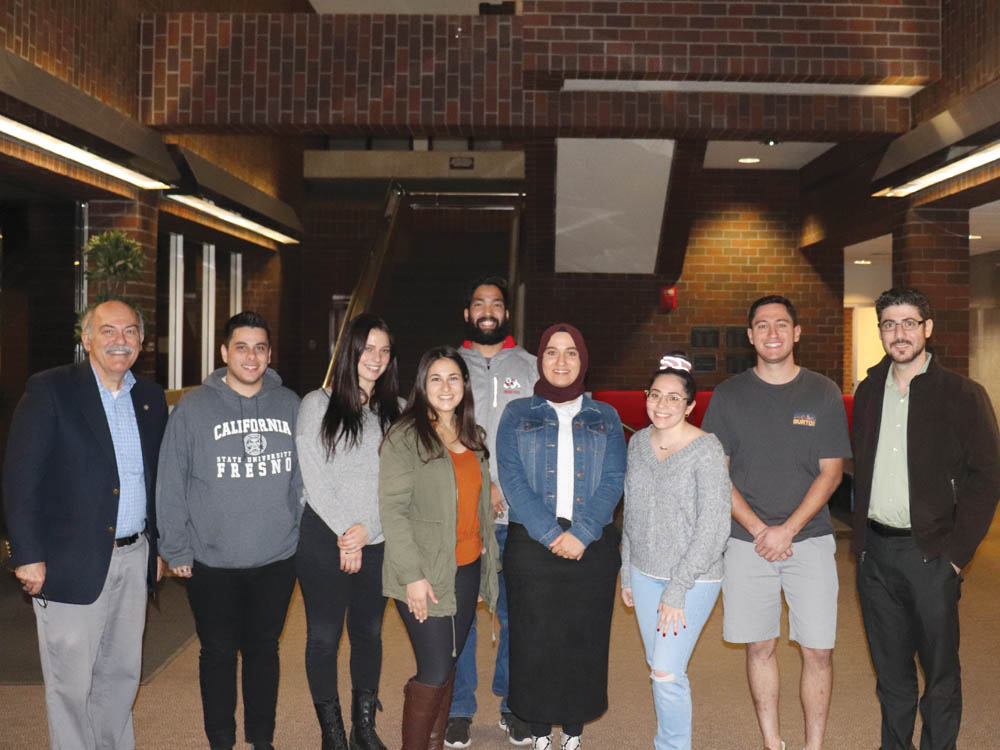
Photo: Andrew Hagopian
Arshak Abelyan
Staff Writer
Armenian refugees from the Ottoman Empire, who were able to escape the Genocide, experienced another traumatic shock by settling in the new Soviet Union. “Living under a new political order necessitated a total transformation of these ex-Ottoman subjects, into loyal Soviet citizens,” stated guest speaker Ayşenur Korkmaz.
On Wednesday, October 30, 2019, Korkmaz explored the question of attachment to homeland(s) in three periods in Soviet Armenia, through her lecture, “‘No Place Like Home’: Ergir and the Ex-Ottoman Armenians in Soviet Armenia.” The lecture was sponsored the Armenian Studies Program, with the generous support of the Clara Bousian Bedrosian fund.
Korkmaz argued that Armenians under Soviet rule were subjected to three distinct periods in reference to the term of “Ergir.” The first period, from the 1920s to the 1930s, was when Armenians were able to express their feelings of exiled and nostalgia. This was evident in the literature of the time, in childhood memoirs, and even in music. One example was the song Qele Lao, which reflects the yearning to go back to “Ergir.” Vagharshak Norents was one of many poets who wrote about the dream of returning to “Ergir” and his work emphasized how important this time period was in providing a first-hand perspective of those refugees and their attachment to their homeland.
Armenians also established new settlements in Soviet Armenia based on the ones left behind in the lost Ergir, such as Nor (New) Arabkir and Nor Malatia.
The second period was the Stalinist period, which lasted from 1936 until 1953. “In an environment like this, the concept of ‘Ergir’ completely disappeared from literary works,” said Korkmaz. With censorship, espionage, and terror that led to many Armenians to be exiled to Siberia, the number of literary works dramatically declined. She also emphasized that Stalin’s regime suspected Armenians since they resisted collectivization and because Soviet Armenia was on the very border of the union.
The concept of “Ergir” was revived in the post-Stalinist period, especially after 1960, and literary production boomed. “Even though Stalin’s regime had achieved its goal of silencing the mention of Ottoman life or the Genocide, it had unintentionally laid the groundwork for a new period when the narratives of Ergir gained in popularity,” said Korkmaz.
Ler Kamsar was a notable author who lived and experienced the censorship which landed him in prison. Dr. Korkmaz read excerpts from one of his literary works, where he said “I was deprived of the two most essential things to live, homeland and liberty.” Without these literary works, the first-hand experiences of those refugees from the Ottoman period would not have been preserved.
Korkmaz has a specific interest in this period in Armenian history when it was under Soviet control. “I see a big void in the field of literature pertaining to Soviet Armenia,” concluded Korkmaz. She attended an American school in Turkey, which was more liberal in interpreting Turkish history. With this background knowledge and seeking to learn more, she visited Armenia and conducted research there, as well as learning fluent Armenian.
Korkmaz is optimistic that more can be done by other researchers to fill further gaps left in Soviet Armenian history. “Reaching that generation of those who lived in that period through the more recent generation is the best way we can fill the gaps in the oral history in the Soviet period.
 Hye Sharzhoom Armenian Action
Hye Sharzhoom Armenian Action